Europe is a treasure trove of cultural heritage. From ancient Roman ruins to medieval castles and museums fill with priceless art, Europe is a cultural enthusiast’s dream come true. There are countless places to visit in Europe that will transport you to another time and place, where you can immerse yourself in the history and art of the continent.
If you are a cultural enthusiast planning a trip to Europe, this article will help you discover some of the best places to visit. Whether you are interest in ancient history, Renaissance art, or modern architecture, Europe has something to offer every type of cultural traveler.
Historic Landmarks:

Europe is home to some of the most iconic historic landmarks in the world. From the Colosseum in Rome to the Eiffel Tower in Paris, these landmarks have become symbols of Europe’s rich cultural heritage. Here are some of the best Cultural Destinations in Europe to visit:
1. The Acropolis in Athens, Greece
The Acropolis in Athens, Greece is a must-visit destination for cultural enthusiasts. This ancient citadel is home to some of the world’s most iconic landmarks, including the Parthenon, the Temple of Athena Nike, and the Erechtheion.
Located on a hill overlooking the city of Athens, the Acropolis has a rich history dating back to the 5th century BC. It serv as the center of Athenian power and culture during the Golden Age of Athens, and many of its buildings were design by the famous architect Phidias.
Visitors to the Acropolis can take a guided tour or explore the site on their own. The Parthenon, which is dedicat to the goddess Athena, is the most famous landmark on the Acropolis and is know for its stunning columns and intricate friezes. The Temple of Athena Nike, located at the entrance to the Acropolis, features beautiful sculptures and offers stunning views of the city below.
Other highlights of the Acropolis include the Propylaea, the gateway to the citadel, and the Theater of Dionysus, an ancient amphitheater that hosted plays and other cultural events. Visitors can also explore the Acropolis Museum, which houses many of the artifacts found on the site.
2. The Roman Forum in Rome, Italy
The Roman Forum in Rome, Italy is a must-visit destination for cultural enthusiasts. This ancient site was once the center of Roman political and social life, and it played a key role in shaping Western civilization.
Located in the heart of Rome, the Roman Forum features a collection of ruins from ancient Rome’s most important buildings, including the Temple of Saturn, the Temple of Vesta, and the Arch of Titus. Visitors can take a guided tour or explore the site on their own, marveling at the incredible architecture and imagining what life was like in ancient Rome.
Highlights of the Roman Forum include the Curia, the seat of the Roman Senate, and the Basilica of Maxentius, a massive building that was once used for legal proceedings and other civic events. Visitors can also explore the nearby Palatine Hill, where many of ancient Rome’s wealthiest citizens lived.
3. The Tower of London in London, England
The Tower of London in London, England is a must-visit destination for cultural enthusiasts. This historic castle has a rich history dating back almost a thousand years, and it has served as a royal palace, a prison, and even a zoo.
Located on the banks of the River Thames, the Tower of London features a collection of buildings and landmarks, including the White Tower, the Jewel House, and the famous Tower Bridge. Visitors can take a guided tour or explore the site on their own, learning about the castle’s fascinating history and admiring its impressive architecture.
Highlights of the Tower of London include the Crown Jewels, a stunning collection of precious gems and regalia use by the British monarchy, and the Tower Ravens, a group of birds that are said to protect the castle and the Crown. Visitors can also explore the medieval walls and towers, which offer stunning views of the surrounding city.
4. The Palace of Versailles in Versailles, France
The Palace of Versailles in Versailles, France is a must-visit destination for cultural enthusiasts. This stunning palace was once the home of the French monarchy, and it played a key role in shaping the country’s history and culture.
Located just outside of Paris, the Palace of Versailles features a collection of opulent rooms and stunning gardens, including the famous Hall of Mirrors and the King’s Grand Apartment. Visitors can take a guided tour or explore the palace on their own, admiring the incredible architecture and learning about the palace’s fascinating history.
Highlights of the Palace of Versailles include the Royal Chapel, a stunning example of Baroque architecture, and the Queen’s Hamlet, a charming collection of buildings that were designed to resemble a rustic village. Visitors can also explore the nearby gardens, which feature fountains, statues, and meticulously manicured lawns.
Museums:
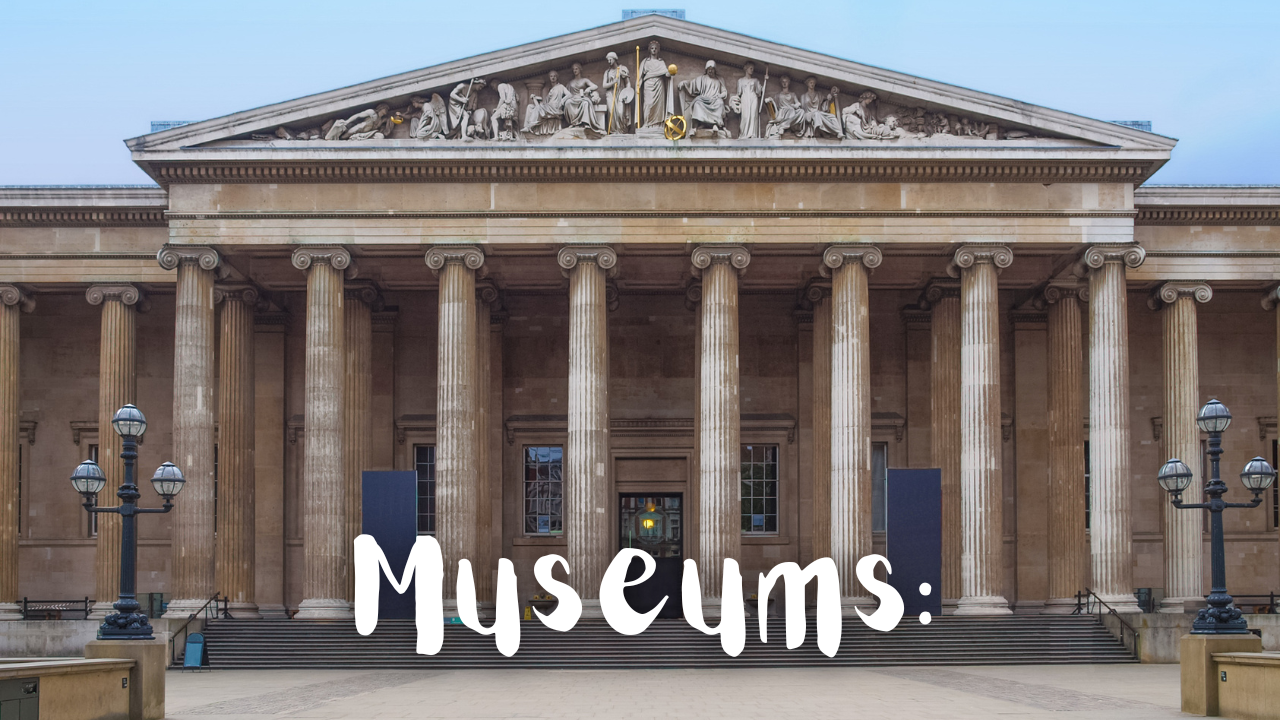
Europe is home to some of the most renowned museums in the world. These museums are filled with priceless art and artifacts that provide a window into Europe’s rich cultural history. Here are some of the best museums to visit in Europe:
1. The Louvre Museum in Paris, France
The Louvre Museum in Paris, France is a must-visit destination for cultural enthusiasts. This world-famous museum is one of the largest and most important art museums in the world, featuring a collection of over 35,000 works of art.
Located in the heart of Paris, the Louvre Museum is housed in a stunning palace that was once the home of the French monarchy. Visitors can explore the museum’s vast collection, which includes everything from ancient Egyptian artifacts to Renaissance paintings to contemporary sculpture.
Highlights of the Louvre Museum include the Mona Lisa, one of the most famous paintings in the world, and the Winged Victory of Samothrace, a stunning sculpture that dates back to ancient Greece. Visitors can also explore the nearby Tuileries Gardens, which offer stunning views of the museum and the surrounding city.
2. The British Museum in London, England
The British Museum in London, England is a must-visit destination for cultural enthusiasts. This world-renowned museum is dedicated to human history, art, and culture, featuring a collection of over 8 million works from around the world.
Located in the heart of London, the British Museum showcases artifacts from every continent, ranging from ancient Egyptian mummies to Greek sculptures to African masks. Visitors can explore the museum’s vast collection, learning about the history and culture of civilizations from all corners of the globe.
Highlights of the British Museum include the Rosetta Stone, a key artifact that helped scholars unlock the secrets of ancient Egyptian hieroglyphics, and the Parthenon Sculptures, a collection of stunning sculptures from the ancient Greek temple. Visitors can also explore the museum’s many galleries, which showcase everything from Japanese prints to Islamic art.
3. The Vatican Museums in Vatican City
The Vatican Museums in Vatican City are a must-visit destination for cultural enthusiasts. This incredible museum complex features an extensive collection of art and artifacts from throughout history, including many pieces that are considered masterpieces of the Renaissance.
Located within the walls of Vatican City, the Vatican Museums are among the most important museums in the world. Visitors can explore the many galleries, which showcase everything from ancient Egyptian artifacts to contemporary art. Highlights of the museum include the Sistine Chapel, home to some of the most famous ceiling frescoes in the world, and the Gallery of Maps, which features a stunning collection of maps and frescoes.
Visitors to the Vatican Museums can also view the many works of art and sculpture on display, including masterpieces by Raphael, Caravaggio, and Michelangelo. The collection of ancient Roman and Greek sculptures is also particularly impressive.
4. The Rijksmuseum in Amsterdam, Netherlands
The Rijksmuseum in Amsterdam, Netherlands is a must-visit destination for cultural enthusiasts. This stunning museum is dedicated to the arts and history of the Netherlands, showcasing a collection of more than one million objects.
Located in the heart of Amsterdam, the Rijksmuseum is housed in a magnificent building that dates back to the late 1800s. Visitors can explore the museum’s many galleries, which showcase everything from Dutch paintings to Asian art. Highlights of the museum include Rembrandt’s masterpiece, “The Night Watch,” and the world’s largest collection of Dutch art from the Golden Age.
In addition to the paintings and sculptures on display, visitors to the Rijksmuseum can also view historical objects, including Delftware and furniture from the 17th and 18th centuries. The museum also has a library with an extensive collection of books and manuscripts.
Art Galleries:
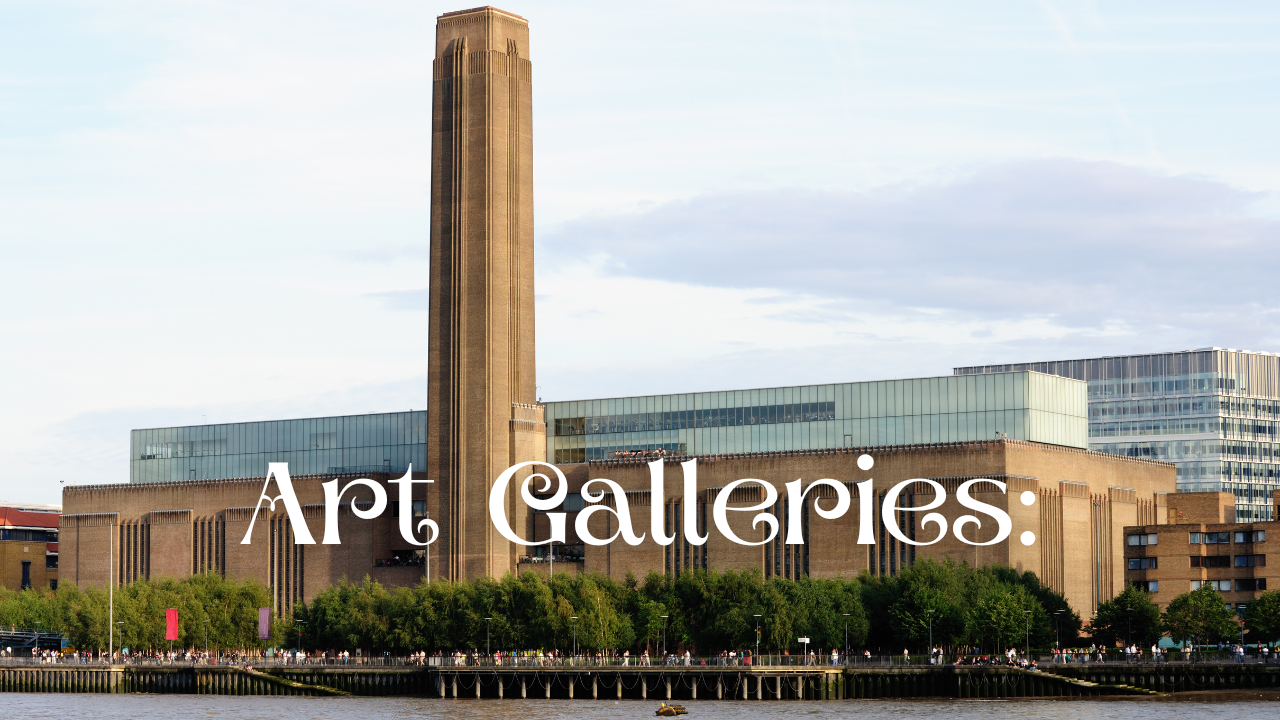
Europe has been a center of art for centuries, and there are countless art galleries across the continent that showcase some of the world’s most beautiful and significant art. Here are some of the best art galleries to visit in Cultural Destinations in Europe:
1. The Prado Museum in Madrid, Spain
The Prado Museum in Madrid, Spain is one of the most important museums in the world and a must-visit destination for cultural enthusiasts. This incredible museum is home to one of the largest collections of European art, with works dating from the 12th century to the 20th century.
The museum’s collection is particularly strong in works by Spanish artists, including Francisco de Goya, Diego Velázquez, and El Greco. Visitors to the Prado can also view works by other famous artists such as Rembrandt, Rubens, and Raphael.
The Prado is housed in a beautiful 18th-century building in the heart of Madrid, which was originally designed as a natural science museum. Today, it is one of the most visited cultural attractions in the city, with millions of visitors each year.
2. The Tate Modern in London, England
The Tate Modern in London, England is a world-renowned contemporary art museum and a must-visit destination for cultural enthusiasts. Located on the banks of the River Thames, the museum is housed in a former power station that has been transformed into a stunning space for art exhibitions and events.
The museum’s collection includes works by some of the most famous modern and contemporary artists, including Pablo Picasso, Salvador Dalí, and Andy Warhol. Visitors to the Tate Modern can also view works by emerging artists, participate in art workshops and talks, and attend film screenings and other cultural events.
One of the highlights of the museum is the Turbine Hall, a vast space that hosts large-scale installations and performances. Recent installations have included a giant sun and a recreation of the iconic swings from the playground at Tate Liverpool.
3. The Museum of Modern Art in Paris, France
The Museum of Modern Art in Paris, France is a must-visit destination for cultural enthusiasts interested in modern and contemporary art. The museum, also known as the Centre Pompidou, is located in the heart of Paris and is home to one of the largest collections of modern and contemporary art in Europe.
The museum’s collection includes works by some of the most famous modern and contemporary artists, including Pablo Picasso, Henri Matisse, and Salvador Dalí. Visitors to the Museum of Modern Art can also view works by emerging artists, participate in art workshops and talks, and attend film screenings and other cultural events.
One of the highlights of the museum is the building itself, which is a masterpiece of modern architecture. Designed by architects Renzo Piano and Richard Rogers, the Centre Pompidou is famous for its exposed structural elements and brightly colored pipes and ducts.
4. The Galleria Borghese in Rome, Italy
The Galleria Borghese is a prominent art museum located in the heart of Rome, Italy. This museum is a haven for art enthusiasts, housing an impressive collection of masterpieces from some of the most celebrated artists in history.
The museum was established in the 17th century and is housed in the Borghese Villa, a stunning example of Italian architecture. The villa was commissioned by Cardinal Scipione Borghese and built by architect Flaminio Ponzio. The building is surrounded by beautiful gardens, which add to the charm of this cultural destination.
The museum’s collection boasts an impressive array of art from the Renaissance and Baroque periods, with works by artists such as Caravaggio, Bernini, and Raphael. Visitors to the Galleria Borghese can expect to see masterpieces such as Bernini’s “Apollo and Daphne,” Caravaggio’s “David with the Head of Goliath,” and Raphael’s “Entombment.”
Aside from its remarkable collection, the Galleria Borghese also offers guided tours, which are highly recommended for those who want to learn more about the art and the history behind the museum. Additionally, the museum hosts temporary exhibitions throughout the year, which provide further insight into various aspects of Italian art and culture.
Festivals:
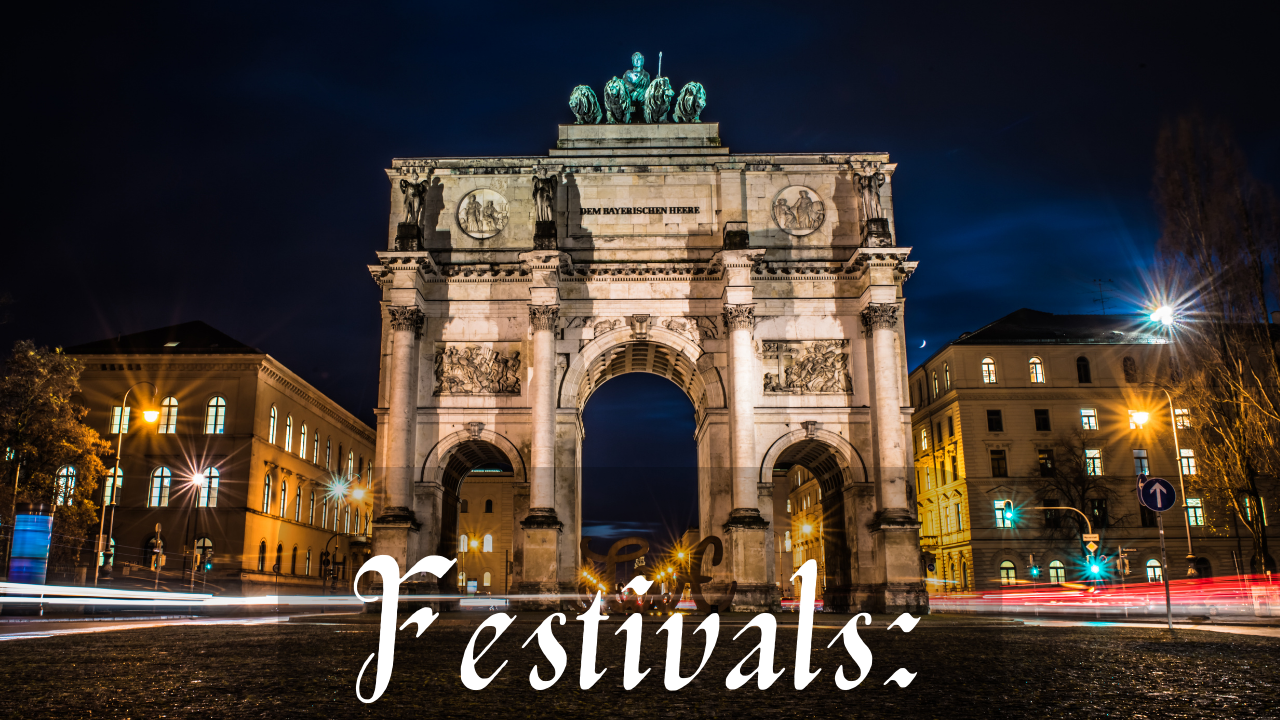
Europe is home to some of the most vibrant festivals in the world. From music festivals to cultural celebrations, there is always something happening in Europe that will allow you to immerse yourself in the continent’s rich cultural heritage. Here are some of the best Cultural Destinations in Europe to visit in:
1. The Carnival of Venice in Venice, Italy
The Carnival of Venice is a world-renowned festival that takes place annually in Venice, Italy. This event attracts cultural enthusiasts from all over the world, who come to experience the city’s unique blend of tradition, history, and art.
The origins of the Carnival of Venice can be traced back to the 13th century when Venetians began celebrating the victory of the Republic of Venice over the Patriarch of Aquileia. The festival has evolved over the centuries, and today it is a colorful spectacle that features elaborate costumes, masks, and parades.
During the festival, the city of Venice is transformed into a vibrant and lively celebration, with visitors and locals alike donning masks and costumes to take part in the festivities. The Carnival is famous for its beautiful and intricate masks, which are worn by participants to hide their identities and add to the sense of mystery and intrigue.
The Carnival of Venice features a variety of events, including street performances, live music, and masquerade balls. Visitors can also attend workshops where they can learn how to make masks and costumes, providing an immersive and educational experience.
One of the highlights of the Carnival of Venice is the “Flight of the Angel” ceremony, in which a costumed performer is lower from the top of St. Mark’s Campanile to the ground below. This event is a true spectacle and is a must-see for those visiting Venice during the festival.
2. The Edinburgh Festival Fringe in Edinburgh, Scotland
The Edinburgh Festival Fringe is the largest arts festival in the world, attracting cultural enthusiasts to the city of Edinburgh, Scotland every August. The festival features a diverse range of performances, including theater, comedy, dance, and music, providing something for everyone to enjoy.
The Edinburgh Festival Fringe began in 1947 when eight theater groups arrive uninvit to the Edinburgh International Festival, which had been establish to celebrate high culture. These groups perform on the fringe of the official festival, and the term “fringe” was coine to describe this alternative festival.
Today, the Edinburgh Festival Fringe has grown to include over 55,000 performances in hundreds of venues across the city, featuring artists from around the world. The festival is known for its informal and experimental atmosphere, with performers often using the festival as an opportunity to try out new material.
The Edinburgh Festival Fringe is a truly unique cultural experience, with a lively and bustling atmosphere that takes over the city for the entire month of August. Visitors can explore the many venues and performances, discovering new artists and works of art, and enjoying the vibrant energy of the festival.
One of the highlights of the Edinburgh Festival Fringe is the Royal Mile. A street in the city center that is closed to traffic during the festival. The Royal Mile becomes a hub of activity during the festival, with street performers, food vendors, and artists showcasing their work to passersby.
3. Oktoberfest in Munich, Germany
Oktoberfest is an annual beer festival held in Munich, Germany, that attracts cultural enthusiasts from around the world. The festival takes place over two weeks in late September and early October, with over 6 million visitors attending each year.
festival began in 1810 to celebrate the wedding of Crown Prince Ludwig and Princess Therese of Saxony-Hildburghausen. The festival was such a success that it became an annual event, evolving into the world-renowned festival we know today.
At Oktoberfest, visitors can enjoy traditional Bavarian food, music, and, of course, beer. The festival is held in Theresienwiese, a large open space in the heart of Munich, where 14 large tents are set up for visitors to enjoy beer and food.
Each tent has its own unique atmosphere and serves a different type of beer. Visitors can also enjoy traditional Bavarian dishes like roasted chicken, sausages, and sauerkraut.
Also Read: SCUBA DIVING SITES IN THAILAND
Architecture:

Europe is home to some of the most beautiful and unique architecture in the world. From Gothic cathedrals to modern skyscrapers, there is no shortage of architectural wonders to explore in Europe. Here are some of the best examples of Cultural Destinations in Europe architecture:
1. The Sagrada Familia in Barcelona, Spain
The Sagrada Familia is a magnificent church located in Barcelona, Spain. It was design by the famous Catalan architect Antoni Gaudi, and construction began in 1882. Gaudi worked on the church until his death in 1926, and it is still under construction to this day, making it one of the world’s longest-running construction projects.
The Sagrada Familia is known for its unique and breathtaking design, featuring a blend of Gothic and Art Nouveau styles. The church’s exterior is adorn with intricate sculptures and carvings. While its interior is a masterpiece of stained glass windows and soaring arches.
One of the most unique features of the Sagrada Familia is its Nativity Façade, which depicts scenes from the birth of Jesus. The façade is a stunning example of Gaudi’s intricate and imaginative style. With sculptures of animals and plants intertwined with religious imagery.
Visitors can take a guided tour of the church to learn about its history and architecture, as well as the ongoing construction work. The tour includes access to the church’s towers, where visitors can enjoy breathtaking views of Barcelona.
2. The Duomo di Milano in Milan, Italy
The Duomo di Milano, or Milan Cathedral, is a magnificent Gothic cathedral located in the heart of Milan, Italy. Construction of the cathedral began in 1386 and was complete nearly six centuries later, in 1965. It is the largest church in Italy and the third-largest church in the world.
The Duomo di Milano is known for its elaborate exterior. With over 3,400 statues, gargoyles, and other decorations adorning its spires, roof, and façade. The cathedral’s interior is just as stunning, with intricate stained glass windows, ornate altars, and an enormous organ.
Visitors to the Duomo can take a guided tour to learn about the cathedral’s history and architecture, as well as climb to the roof for stunning views of Milan. The rooftop walkway offers a close-up view of the cathedral’s intricate details, as well as panoramic views of the city.
One of the most fascinating features of the Duomo is the fact that it took so long to complete. Generations of architects, builders, and artists contributed to its construction, resulting in a unique blend of styles and techniques.
How Did Nationalism Develop Through Culture In Europe Explain
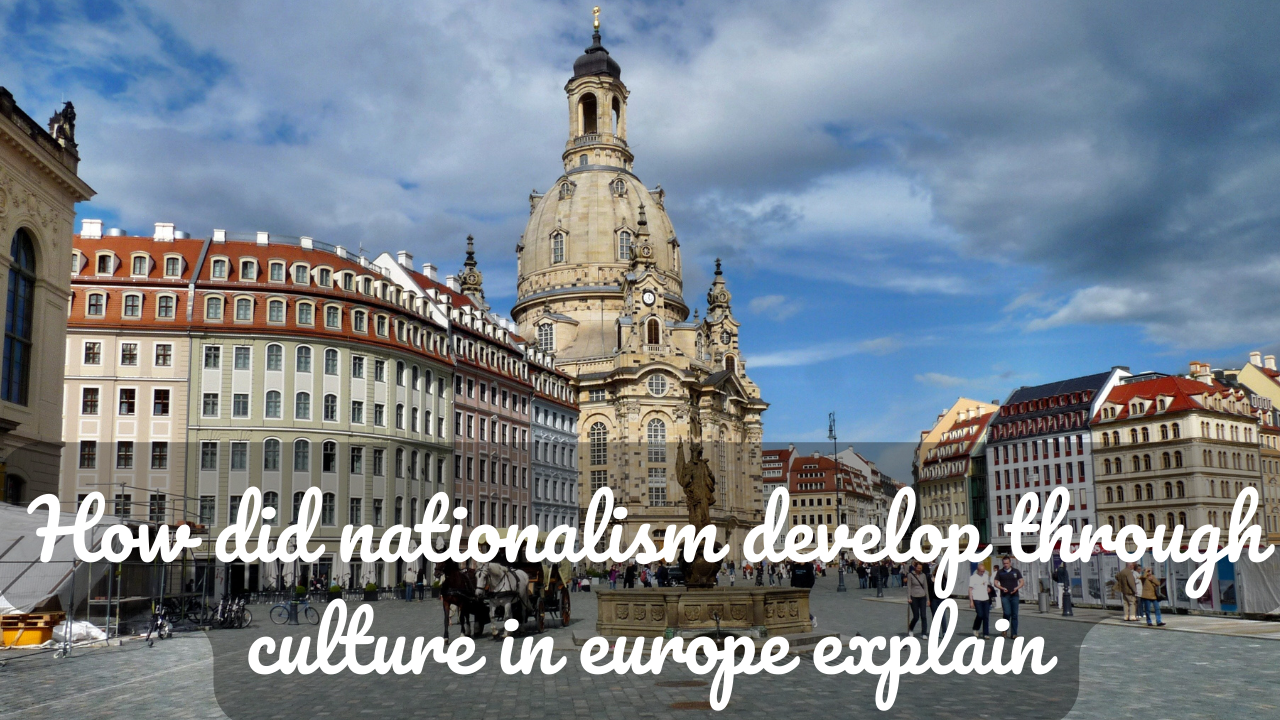
Nationalism is a political and social ideology that emphasizes the importance of a shared national identity, culture, and history. In Cultural Destinations in Europe, nationalism developed through culture in a number of ways.
One of the most significant ways in which nationalism developed through Cultural Destinations in Europe was through the arts. Romanticism, which emerged in the late 18th century, emphasized the importance of national identity and cultural heritage. Artists, writers, and musicians sought to create works that celebrated the unique traditions and folklore of their countries.
Nationalist movements also developed through language. Many European countries saw a revival of interest in their national languages in the 19th century. This was often tie to political movements seeking independence from foreign powers or the creation of new nation-states. For example, the Irish language became a symbol of Irish nationalism. While the Polish language played a key role in the Polish struggle for independence.
Music was another important medium for the development of nationalism in Europe. Nationalist composers, such as Bedřich Smetana in Czech Republic, and Jean Sibelius in Finland, drew on traditional folk melodies and themes in their works, creating music that celebrated national identity and cultural heritage.
How Can I Plan A Cultural Destinations in Europe Trip?
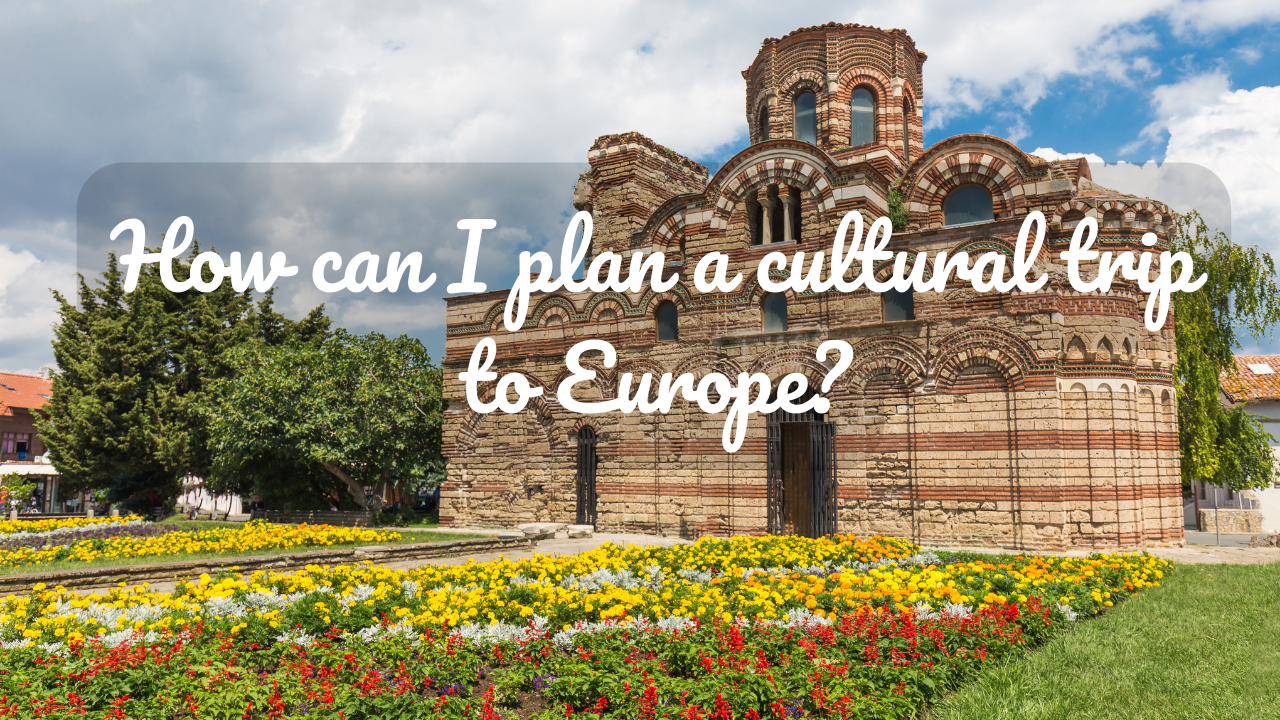
Planning a trip Cultural Destinations in Europe can be a daunting task, but with the right approach. It can be a rewarding and enriching experience. Here are some tips to help you plan your cultural trip to Europe:
Decide on your travel dates and budget. This will help you narrow down your options and determine how much time you have to spend in each destination.
Choose your destinations: Consider the cultural attractions you want to see and choose destinations that have them. Cultural Destinations in Europe is home to many cultural gems. So do some research to find the ones that interest you the most.
Research cultural events: Europe has a rich cultural calendar, so look for events that coincide with your travel dates. These can include festivals, concerts, and exhibitions.
Book accommodation: Once you have your destinations and travel dates, start looking for accommodation that fits your budget and preferences. Consider staying in centrally located areas to make it easier to access cultural attractions.
Cultural Differences Between Asia And Europe

Asia and Europe are two distinct continents that have unique cultural differences. These differences are evident in the way people communicate, interact, and live their daily lives. Some of the significant cultural differences between Asia and Europe are as follows:
1. Communication Style:
In Asia, communication is often indirect, and people tend to avoid confrontations. In contrast, Europeans tend to be more direct and explicit in their communication.
2. Social Norms:
Asian societies often place a strong emphasis on respect for authority and hierarchy. While European societies tend to value individuality and egalitarianism.
3. Religion:
While Cultural Destinations in Europe has a predominantly Christian population. Asia is home to several major religions, including Hinduism, Buddhism, Islam, and Confucianism.
4. Food:
European cuisine often involves meat and dairy products, while Asian cuisine typically involves rice, noodles, and vegetables. Spices and flavors also differ greatly between the two regions.
5. Art And Architecture:
Europe is renown for its Gothic, Renaissance, and Baroque architecture, while Asian art and architecture often feature intricate designs and bright colors.
Also Read: Countries to Visit in Europe
Religion and culture in medieval Europe
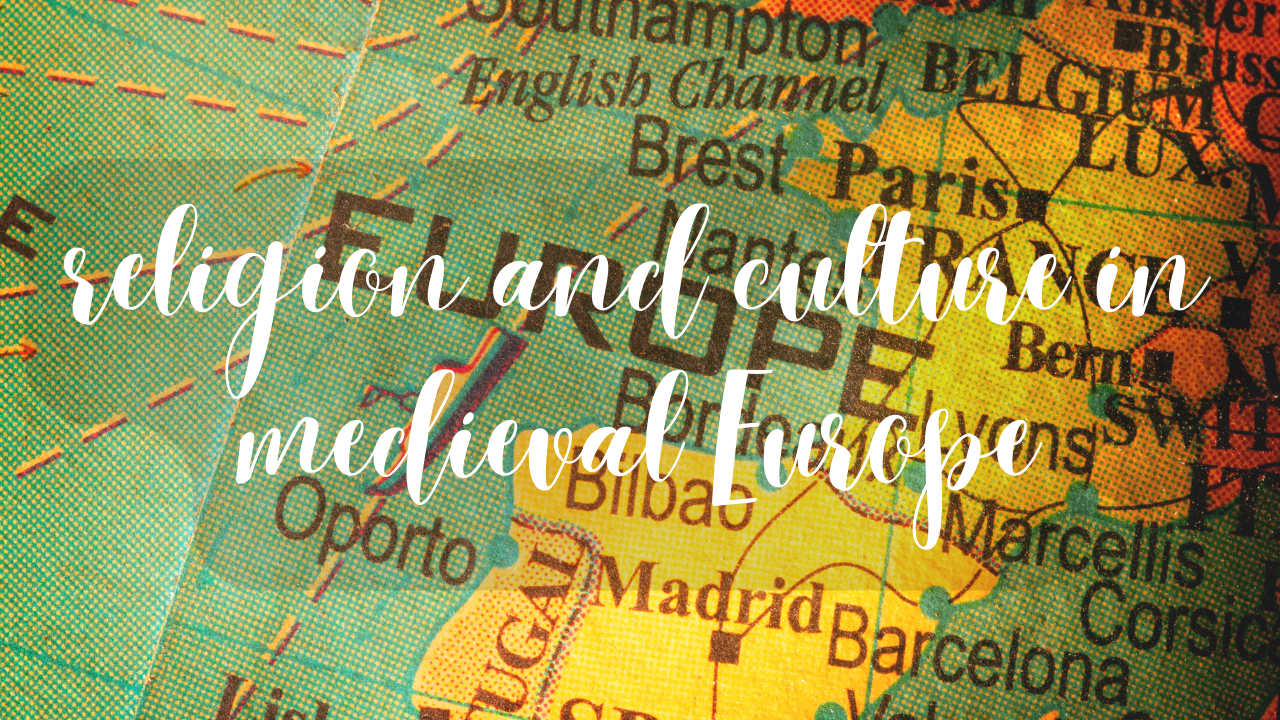
Religion and culture were deeply intertwin in medieval Europe. The Catholic Church played a central role in the lives of medieval Europeans. Its teachings and practices influenced every aspect of culture, from art and architecture to music and literature.
One of the most important cultural institutions of medieval Europe was the cathedral. These massive structures were built to glorify God and to serve as the center of religious life in their communities. Cathedrals were often adorn with intricate sculptures and stained glass windows that told biblical stories and celebrated the lives of saints.
In addition To cathedrals, monasteries also played a significant role in medieval culture. Monks were responsible for preserving and copying manuscripts, and they were often the only literate members of society. The manuscripts they created included not only religious texts but also works of literature, science, and philosophy.
The church’s influence also extended to music. Many of the earliest forms of European music were liturgical in nature, and were perform in churches and monasteries. The Gregorian chant, was a form of monophonic, unaccompani singing that was use in Catholic liturgy. Polyphonic music emerged, featured multiple voices singing different melodies simultaneously.
Religion also influenced the visual arts. Medieval art was characteriz by a strong focus on religious themes, and artists often use their work to convey religious messages. Paintings and sculptures of the Virgin Mary were common in churches and cathedrals. And were use to inspire devotion and piety among the faithful.
Medieval Cultural Destinations in Europe Achievements
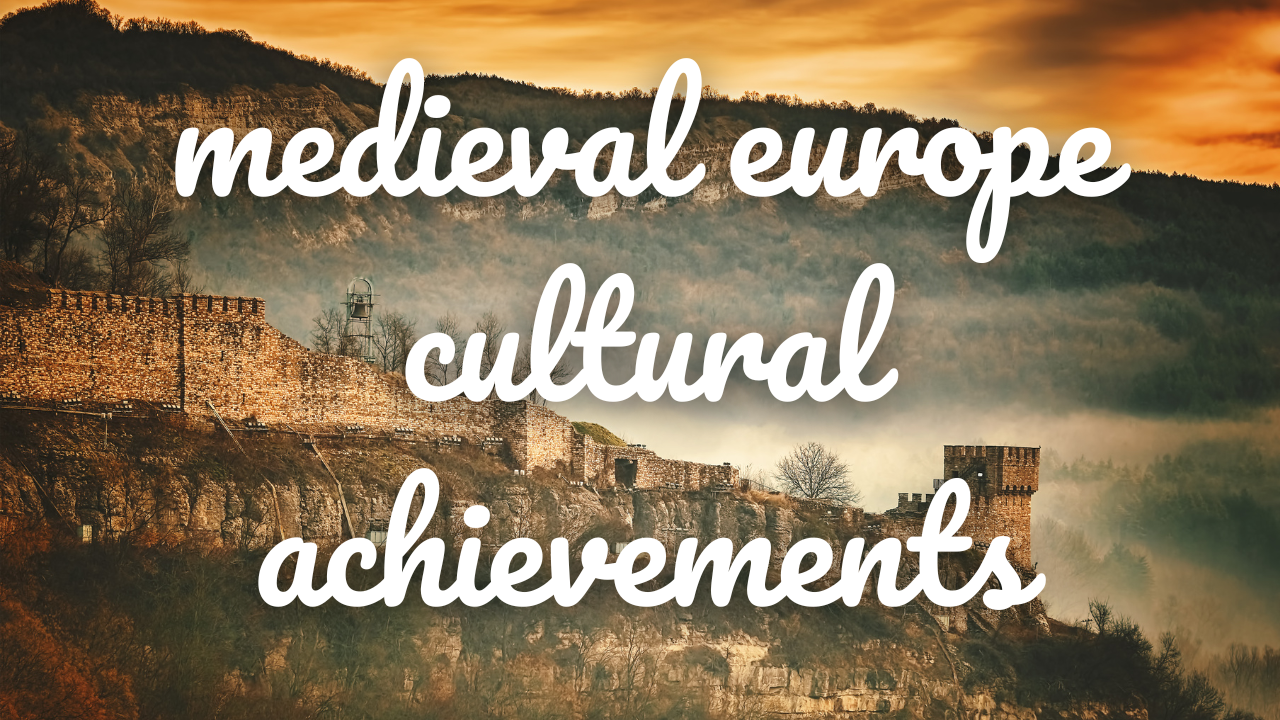
Medieval Cultural Destinations in Europe, spanning from the 5th to the 15th century, was a time of great cultural achievements. While associat with barbarism and a lack of progress. Medieval Europe produced many advancements in art, architecture, literature, music, and science. Here are some of the notable cultural achievements of medieval Europe:
1. Gothic architecture:
The Gothic style of architecture emerged in the 12th century and is characterized by its pointed arches, ribbed vaults, and intricate ornamentation. Notable examples of Gothic architecture in medieval Europe include Notre-Dame Cathedral in Paris. The Duomo in Milan, and the Cologne Cathedral in Germany.
2. Literature:
Medieval Europe produced some of the most enduring works of literature in history. The epic poem “Beowulf,” written in Old English, tells the story of a hero who battles monsters and dragons. The Arthurian legends, which originated in France and England. Tell the tales of King Arthur, his knights of the Round Table, and their quest for the Holy Grail.
3. Music:
Medieval Europe saw the development of Gregorian chant, a form of monophonic, unaccompani vocal music that is still perform in some churches today. Troubadours and minstrels traveled the countryside, entertaining crowds with songs and stories.
4. Art:
The medieval period the development of illuminat manuscripts, which were beautifully illustrated books creat by hand. The Book of Kells, created in the 9th century in Ireland. Is one of the most famous examples of illuminated manuscripts.
Conclusion:
Europe is a culturally rich and diverse continent that offers a plethora of destinations for cultural enthusiasts. From historic landmarks to museums and festivals. There are countless opportunities to immerse oneself in the art, history, and traditions of Europe. With careful planning and research, a cultural trip to Europe can both educational and unforgettable. You’re interest in exploring the ancient ruins of Athens. Viewing the masterpieces at the Louvre, or experiencing the vibrant energy of Oktoberfest. Europe has something to offer every cultural enthusiast. Don’t hesitate to start planning your next cultural adventure in Europe today.